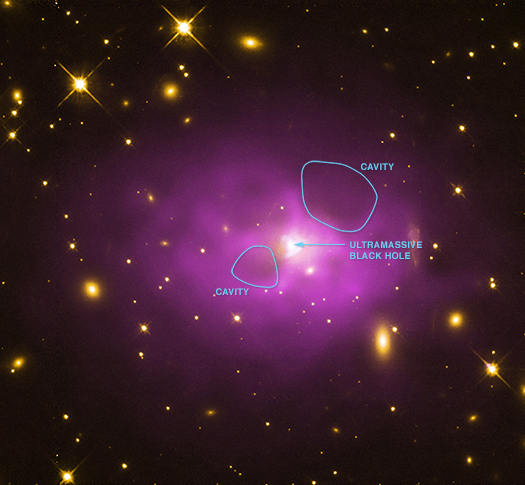Biggest black holes may be ten times more massive than we thought
Ars Technica » Scientific Method 2012-12-19

Most large galaxies host a supermassive black hole, ranging from millions to billions of times the mass of the Sun. Based on the study of many systems, astronomers discovered a correlation between certain properties of a galaxy and the mass of its central black hole. This relationship seems universal, but we've only been able to examine a subset of the galaxies out there. Black hole masses have only been measured for some of the biggest galaxies in the local Universe—the bright, massive galaxies that sit at the centers of galaxy clusters.
A recent study has used an independent means of estimating black hole masses, based on their brightness in X-rays and radio light. J. Hlavacek-Larrondo, A. C. Fabian, A. C. Edge, and M. T. Hogan examined the massive central galaxies in 18 galaxy clusters and found that previous measurements could be off by as much as a factor of ten. In other words, if the luminosity-based measurements are correct, a black hole currently thought to be 6 billion times the mass of the Sun could actually be 60 billion times more massive than our local star.
That leaves two possibilities: either black holes in bright cluster galaxies behave differently by producing more light than we think they should, or the biggest black holes in the Universe might be astoundingly ultramassive.
Read 8 remaining paragraphs | Comments